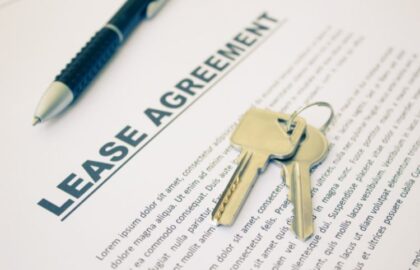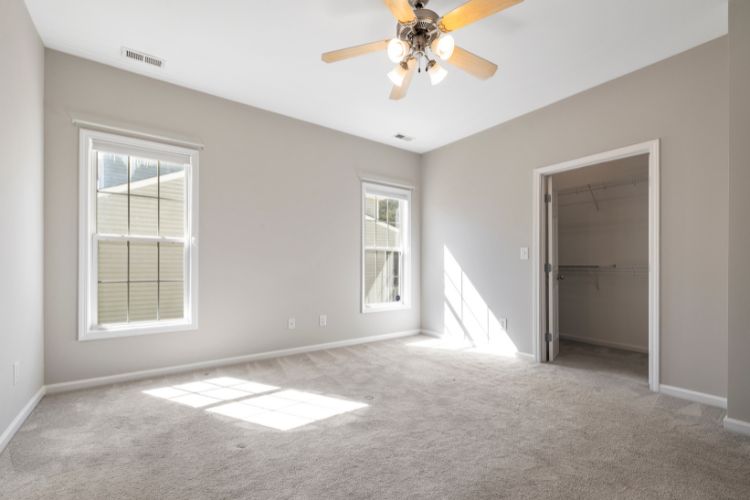
As a landlord or tenant in Australia, it’s important to understand the guidelines around carpet replacement in rental properties. When should you consider replacing the carpets, and who is responsible for the cost?
In this article, we’ll dive into the details of fair wear and tear, lease agreements, and the lifespan of carpets in rental homes. Armed with this knowledge, you can ensure your rental property stays in great condition and avoid any legal issues down the line.
How Often Should a Landlord Replace a Tenant’s Carpet? The Quick Answer
In Australia, landlords are generally responsible for replacing the carpet in a rental property if the damage goes beyond what is considered “fair wear and tear.” This could include issues like rips, burns, or permanent stains.
Interesting fact: Carpets in rental properties typically have a lifespan of around 10 years, after which landlords are usually expected to replace them, regardless of the carpet’s condition.
However, there are certain cases where landlords must replace the carpet sooner, such as if there is severe mould growth, excessive wear and tear, persistent odours, or health and safety concerns.
Landlords should also address any pre-existing damage to the carpet before a new tenant moves in.
As for tenants, they have a role to play in caring for the carpet, including regular cleaning, proper use to avoid excessive wear and tear, and promptly reporting any damage.
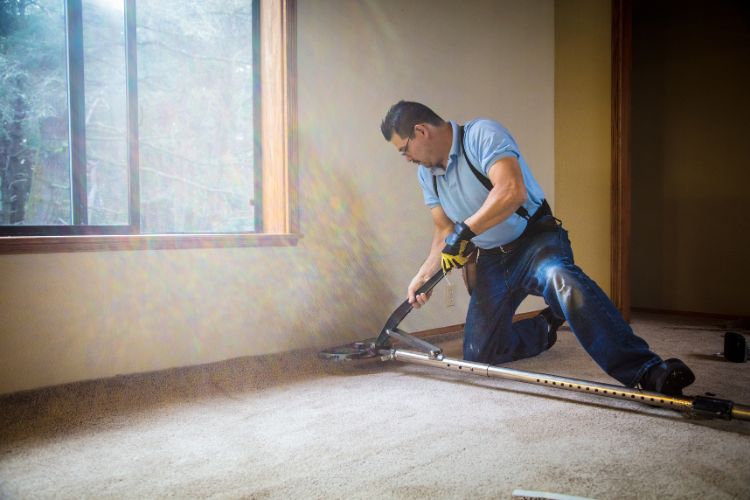
What Factors Should Landlords Consider Before Replacing a Carpet?
Landlords in Australia have several important factors to weigh when deciding if and when to replace the carpet in a rental property. Let’s explore these key considerations:
Lease Agreement Terms
The terms of the lease agreement are a crucial starting point. Landlords should review the lease to understand any specific requirements or timelines around carpet replacement, as stated in the contract. Responsibility for replacement should align with these contractual obligations.
See also whether you can transfer your lease to someone else.
Carpet Lifespan
The expected lifespan of the carpet is another major factor. Factors like fibre type, thickness, height, tufting density, and overall quality can all impact how long a carpet will last in a rental setting. Landlords should consider these elements when selecting and assessing replacement needs.
Carpet Selection
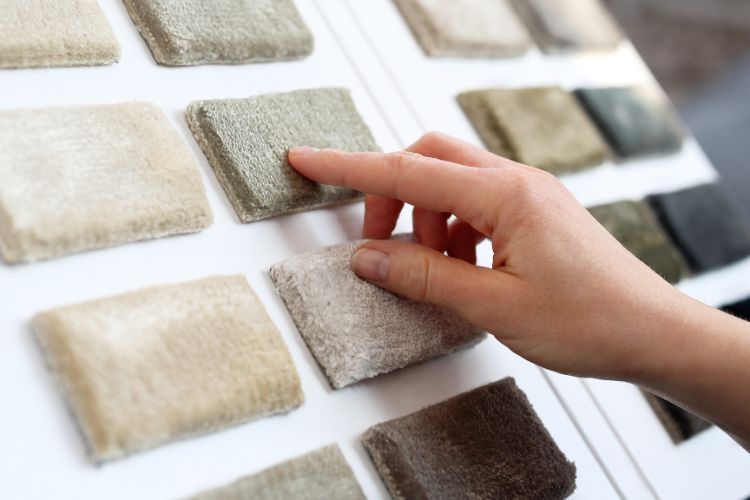
When choosing new carpet for the rental property, landlords must balance quality, price, colour, pile, fibre type, and the quality of the carpet pad. Selecting durable, long-lasting options can help minimise future replacement needs.
Replacement Costs
Landlords should also be aware of the typical costs associated with carpet replacement in Australia, which can range from $3 to $10 per square foot, depending on the size of the area, carpet type, and installation quality. Understanding these costs can help landlords budget accordingly.
The “80 Carpet Rule”
An informal guideline known as the “80 carpet rule” recommends replacement when the carpet reaches 80% wear. This can provide landlords with a general benchmark for when new carpeting may be necessary.
For Landlords: How to Know When a Carpet Needs Replacement
Mould Contamination
One of the most serious carpet-related issues landlords must address is severe mould growth.
Carpets can become breeding grounds for harmful mould spores if exposed to leaks or moisture. Mould exposure can trigger allergies, respiratory problems, and even chronic illnesses in tenants.
If professional cleaning is unable to fully remove extensive mould contamination, the landlord is legally obligated to replace the affected carpet. Maintaining a healthy, mold-free living environment is paramount.
Tripping Hazards
Landlords must also be vigilant for ripped or frayed sections of carpet, as these can pose serious tripping hazards.
Loose, damaged carpet edges can especially endanger young children and elderly tenants, potentially leading to falls and injuries. Landlords have a duty to promptly repair or replace any hazardous carpet damage to ensure the safety of their rental property.
Odour Issues
Persistent, unpleasant odours from sources like pet urine, smoke, or mildew can also be problematic in rental properties. These stubborn smells not only create an uncomfortable living environment but can also exacerbate tenant allergies and asthma.
If professional odour removal methods fail to resolve the issue, landlords should consider replacing the affected carpet to restore a healthy, fresh-smelling atmosphere.
Unsanitary Conditions
Excessive carpet staining or soiling can also be a concern, as these unsanitary conditions can harbour bacteria and allergens.
When regular cleaning is unable to effectively remove deep-set stains, landlords may need to replace the carpet to uphold proper hygiene standards and protect tenant health.
For Tenants: When is It Your Responsibility to Replace the Carpet?
As a tenant, it’s important to understand that you may be responsible for addressing certain issues with the carpet, even if it’s otherwise in good condition.
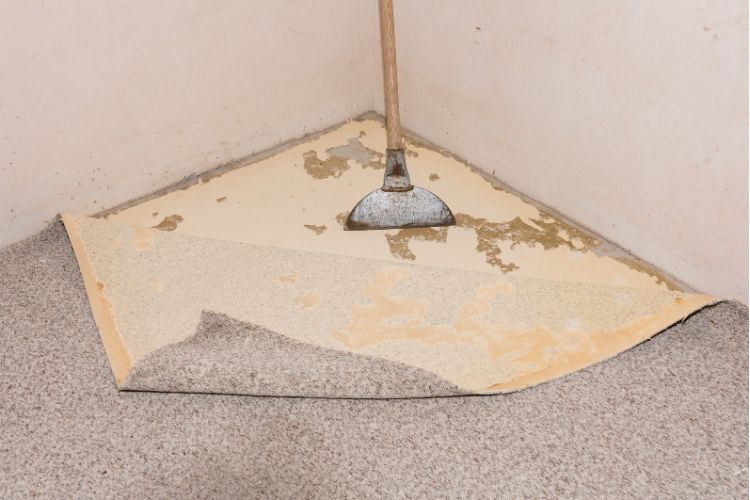
Tenant Damage
If the carpet has been damaged as a result of your actions or negligence, the responsibility for replacement or repair falls on you as the tenant. This could include things like rips, burns, or excessive stains.
In these cases, the landlord has the legal right to deduct the cost of repairs or replacement from your security deposit. However, normal wear and tear is not grounds for such deductions.
Read further on whether a landlord can contact a tenant directly.
Aesthetic Purposes
This includes things like the wrong colour, stubborn stains, or an inability to keep the carpet clean.
If the carpet was already installed when you moved in, and you acknowledged its condition during the lease signing, the landlord is not obligated to replace it due to these aesthetic concerns.
FAQs
Can I replace the carpet in my rental property?
If you feel the carpet in your rental property needs to be replaced, but the damage is not due to your actions, it’s best to communicate with your landlord. Approach the situation politely and put your request in writing.
Do I need to clean carpets at the end of lease QLD?
Tenants in QLD are generally required to leave the property clean and in the same condition as when they first took possession. Professional end-of-lease cleaning services can help ensure compliance with these requirements.
Final Say
In summary, understanding the guidelines around carpet replacement in Australian rental properties is crucial for both landlords and tenants.
Landlords are generally responsible for replacing carpets every 10 years or if the damage goes beyond fair wear and tear, while tenants must take proper care of the carpet and promptly report any issues.
By working together and communicating openly, landlords and tenants can ensure the rental property remains in excellent condition throughout the tenancy.







